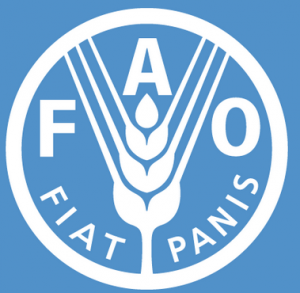FAO Food Price Index rises for ninth consecutive month in February
 Global food commodity prices rose for the ninth consecutive month in February, with quotations for sugar and vegetable oils increasing the most, the Food and Agriculture Organization of the United Nations (FAO), has reported.
Global food commodity prices rose for the ninth consecutive month in February, with quotations for sugar and vegetable oils increasing the most, the Food and Agriculture Organization of the United Nations (FAO), has reported.
The report tracks monthly changes in the international prices of commonly-traded food commodities, which averaged 116.0 points in February, 2.4 per cent higher than the previous month and up 26.5 per cent from a year ago.
The FAO Sugar Price Index rose by 6.4 per cent from January, as production declines in key producing countries together with strong import demand from Asia prompted ongoing concerns over tighter global supplies.
The report indicated that expectations of a production recovery in Thailand and a bumper crop in India dampened the increase.
The FAO Vegetable Oil Price Index gained 6.2 per cent, reaching its highest level since April 2012. Prices for palm, soy, rape, and sunflower seed oils, all rose.
The FAO Dairy Price Index rose by 1.7 percent, led by international export quotations for butter, where firm imports by China met limited supplies from Western Europe.
It said cheese prices declined, partly due to high inventories in the United States.
The FAO Cereal Price Index averaged 1.2 percent higher than in January, it said, adding that sorghum prices rose 17.4 per cent in the month, driven by ongoing strong demand from China.
The report noted that international prices of maize, wheat, and rice were either stable or edged up slightly.
The FAO Meat Price Index increased 0.6 per cent, pushed higher by tight supplies of bovine and ovine meats in key producing regions.
It said, by contrast, pig meat price quotations fell, underpinned by reduced purchases by China amidst heavy oversupplies and a rise in unsold pigs in Germany due to the continued ban on exports to Asian markets.
The FAO also released the Cereals Supply and Demand Brief, including updated assessments of global production, consumption, trade, and inventories.
The report said global wheat production in 2021 was likely to increase and hit a new record of 780 million tonnes, according to FAO’s preliminary forecast, with expectations of a rebound in production in the European Union more than offset weather-impacted production prospects for output in the Russian Federation.
It said maize production in South Africa was expected to reach near-record levels in 2021, while outputs in South America are forecast at well-above-average levels.
The report said the crop was yet to be planted in countries north of the equator.
It noted that highlights include a new and higher estimate for world cereal production in 2020, now seen at 2,761 million tonnes, a 1.9 per cent increase from the previous year, lifted by higher-than-expected outturns reported for maize in West Africa, for rice in India, and wheat harvests in the European Union, Kazakhstan and the Russian Federation.
The FAO’s new projections for 2020/21 include a 2.0 per cent annual increase in global cereal utilization to 2,766 million tonnes and a 5.5 per cent growth in world trade in cereals to 464 million tonnes.
It said global cereal stocks were now forecast to end 2021 at 811 million tonnes, 0.9 per cent below their opening levels, pushing down the stock-to-use ratio to 28.6 percent.
The report said world rice and wheat stocks were expected to increase, while those of coarse grains declined.
Source: GNA
